GAME CHANGERS
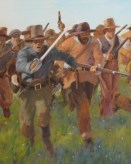
PATRICIA DE LA GARZA DE LEON
SHE SWAPPED SILKS FOR BUCKSKINS
(The following is an excerpt from The Immigrant Spirit: How Newcomers Enrich America by Sam Wyly. Available early 2015, where all books are sold.)
Back when Patricia de la Garza de León moved her family north across the Rio Bravo del Norte (Rio Grande), it was just a river, not a border between two nations. The year was 1799, and Texas still was part of Mexico, and Mexico was still part of the Empire of Spain. Patricia and her husband, military hero Martín de León, had decided to leave their aristocratic Spanish heritage behind, along with a successful ranching business near Cruillas, Mexico, in search of land, freedom, and opportunity.
They traveled North with their two-year old son, Fernando, a small herd of cattle, goats, and horses, carts filled with supplies, and a dream of starting their own colony, of becoming empresarios. The journey took nearly two-years. In 1801, they built their first home, a small hut made of grass and mud, along the banks of the Aransas River. Patricia, who had grown up wearing the finest silk dresses found herself swapping those silks for new clothes made of buckskins. Pioneer life, however difficult, suited her strong and rebellious character well.
Due to escalating violence with the Comanche tribe, the family moved their home from the Aransas River to the Nueces River and eventually to San Antionio. By 1810, they’d built a successful ranching business out of the livestock they brought from Mexico. Yet for all of their success, and despite being loyal Spanish citizens at the time, both of their petitions to start a colony were denied. The Spanish-controlled government of Mexico favored Anglo-American colonization of Texas due to rising rebellion within their own borders.
After more than a decade of fighting, Mexico gained independence from Spain in 1821. A few years later, in 1824, Martin and Patricia were finally granted permission to start their own colony on the banks of the Guadelupe River. By then, Patricia de la Garza de León was forty-seven years old and the mother of ten children. She had lived through Comanche raids and had sacrificed much over the years, but she wasn’t afraid of starting over again. She used her family inheritance to finance the settlement of forty-one families, and soon she and Martin established Victoria Guadalupe—named after the first president of Mexico. It was the first and only Mexican colony in all of Texas.
Doña Patricia, as everyone called her, became the mother of both civilized and pioneer life. She and Martin knew how to anticipate and fight off attacks by the local Comanche tribes and hosted parties and dances at their ranch. They had dirt floors, but Doña Patricia decorated her home with fine furniture and textiles. She hired tutors for her ten children and raised them to be cultured citizens. She ordered a school and a Catholic church to be built nearby, and later she equipped the church with gold and silver altars. After Martin’s death in 1833 from Cholera, Doña Patricia’s ranch remained the economic and social heart of the colony.
Always the rebel, Doña Patricia ardently supported the Texas Revolution in 1835. Although she considered herself a pacifist, she hated the dictator Santa Ana even more than she despised violence. Many of her sons fought for the Texas army, while she smuggled guns and ammunition from New Orleans. Soon after the Republic of Texas was established in 1836, the entire León family was run out of their town by gangs of rowdy Anglo settlers, most of whom who had shown up too late for the war, were hungry for land, and feared anyone with ties to Mexico. Initially, Doña Patricia settled in New Orleans with her family, but she later returned to her childhood village in Mexico. Even though her property, fortune, and home had been confiscated, her beloved Texas kept calling her home. She returned to Victoria in 1844, where she lived a life dedicated to her family and church until her death five years later. Her small property was donated to the church when she died. For years her immense contributions went unacknowledged, until 1972 when two historical markers were erected to celebrate the lives and accomplishments of her family.
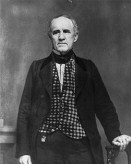
SAM HOUSTON
An Excerpt from Texas Got it Right!:
No single name is more revered in Texas than that of Sam Houston. Not because that name has been given to countless schools, libraries, and public spaces, and to our biggest city. No, Sam Houston is revered by Texans because the man deserves it. He led the Battle of San Jacinto, which won the Texas War of Independence. Then he became the first president of the fledgling Republic of Texas. Then, three years after his first term ended, he came back for a second, out of sheer love and duty.
When the Lone Star Nation became a U.S. state, the people elected him senator. Then they elected him governor.
And let’s not forget that before Sam Houston became Texas’s most famous Texan, he’d already started the first primary school in Tennessee (though he’d received little formal education of his own), been a congressman and governor for that state, fought against the mistreament of Indians before Congress, and taken a bullet in the War of 1812.
Read more about Sam Houston in Texas Got It Right!
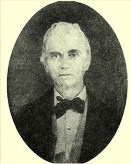
SAMUEL MAVERICK
An Excerpt from Texas Got It Right!:
The first thing you’ve gotta know about the word maverick is that it’s got only two syllables: MAV-rick. The second thing is that the word maverick comes from a Texan, Samuel August Maverick. A land baron, businessman, scrappy independence fighter, and canny politician, Sam Maverick fit the definition of the word coined from his family name…
In 1842, after Texas had become an independent nation, Maverick, along with fifty-five other Texans, was captured by Mexican troups and led on a forced march to a Veracruz prison. From South Carolina, Maverick’s father negotiated with the Mexican government for his son’s release, which the Mexicans made conditional on Maverick’s swearing an oath of allegiance to the Mexican re-annexation of Texas. Maverick refused.
Then, with no explanation, the Mexicans released him and two other prisoners in March 1843. Maverick returned to San Antonio triumphant, carrying his prison shackles as a souvenir. By the time of his death in 1870, Maverick had become the model of a true Texan: loyal to the people he was elected to serve, and loyal to Texas, his own promised land, a place he deemed worth fighting and dying for…
Read more about Samuel Maverick in Texas Got It Right!
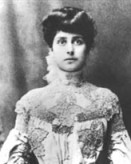
CARRIE MARCUS NEIMAN
An exerpt from Texas Got It Right!:
And finally, there was Carrie Marucs Neiman, the store’s cofounder and guiding spirit. Seldom have mercantile savvy and a God-given sense of style so comfortable inhabited the same person. Born in Kentucky in 1883, Carrie Marcus was the youngest of five children of German immigrants and got to Dallas by way of Hillsboro, Texas.
After high school, she worked in sales and married Abraham Lincoln “Al” Neiman, who ran a salvage business. There was a stint in Atlanta, where they worked briefly for a little-known soft-drink bottler called Coca-Cola. But Al deemed Coca-Cola a dead end, and so they returned to Dallas to start a retail store.
With $25,000 in start-up money, Carrie, her husband, and her brother, Herbert, opened a fifty-foot store on Elm Street. They billed their establishment as “an exclusive shopping place for fashionable women” and sourced their inventory based wholly on Carrie Marcus Neiman’s tastes.
Theirs was the first specialty store for women’s fashions in Texas…
Read more about Carrie Marcus Neiman in Texas Got It Right!
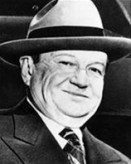
SID RICHARDSON
An exerpt from Texas Got It Right!:
Born in 1891 to an Athens, Texas, saloon owner, Richardson straddled two eras, coming of age just as cotton and cows were giving way to crude as the favored means of getting rich in the Lone Star State.
He got his start trading in cattle and made big money trading in oil. Richardson’s road to riches was neither short nor straight, however. His world-view would forever be tempered by his bumpy ride during the early boom-and-glut years of the Texas oil industry, during which he made and lost a fortune several times over.
It wasn’t until he struck it big with the Keystone Field in West Texas in 1935 that Richardson found himself poised to enter the fraternity of the Big Rich…
Read more about Sid Richardson in Texas Got It Right!
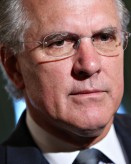
RICHARD FISHER
An excerpt from Texas Got It Right!:
Most Americans have never heard of him. Heck, most Texans probably haven’t either. But if there’s one guy who embodies everything that’s right about the way we’re doing business in Texas today, it’s Richard Fisher.
“When I was sworn into office, I checked all politics and partisanship at the door. I am neither an ‘R’ nor a ‘D’; I am politically indfferent.
When I took this job, Alan Greenspan told me I had only one obligation, which in his words was ‘to speak to the truth.’ I do my best to speak the straight skinny, informed by the work of the staff of the Dallas Fed, the input I receive from the bankers and businesses and citizens of my district, and my own career as a banker, an investor, a trade negotiator, and a man smart enough to come to Texas thirty-seven years ago.” – Richard Fisher, Austin, 2010.
To read more about Texas Game-Changer, Richard Fisher, read Texas Got It Right!
